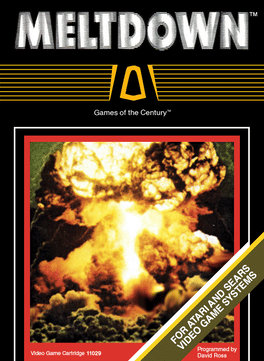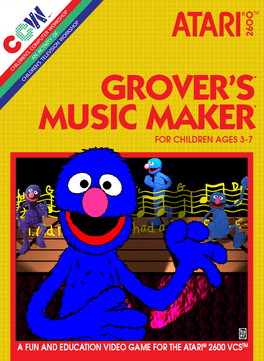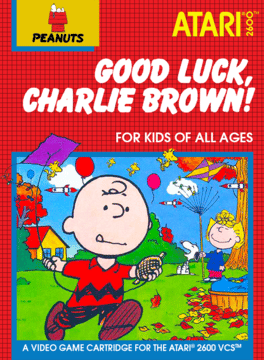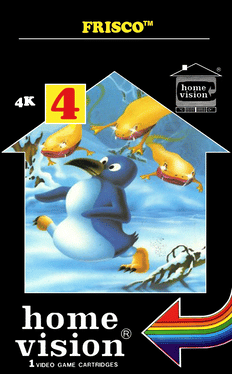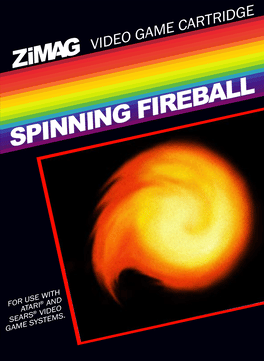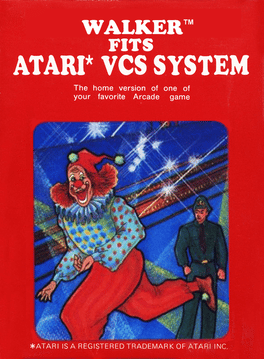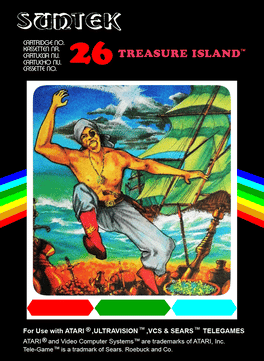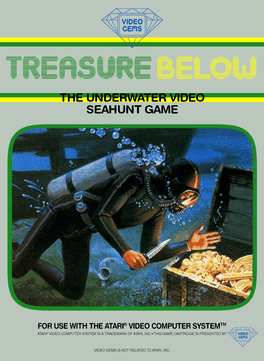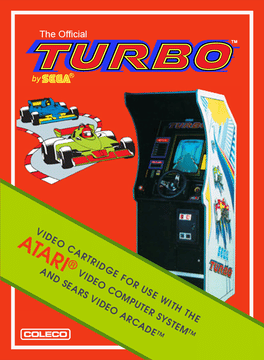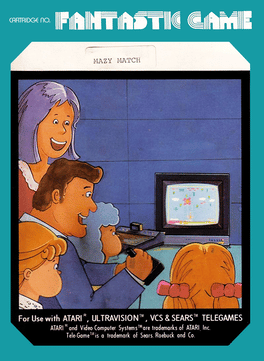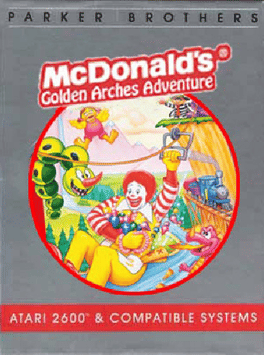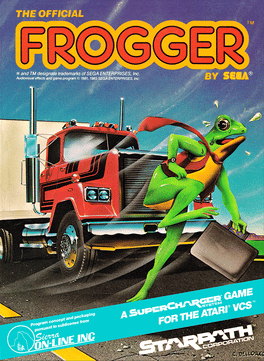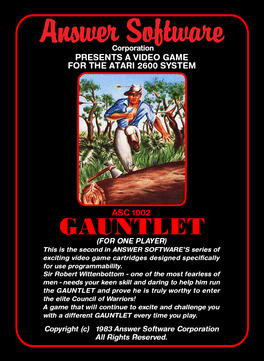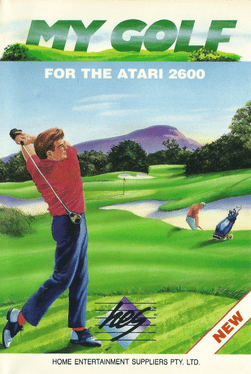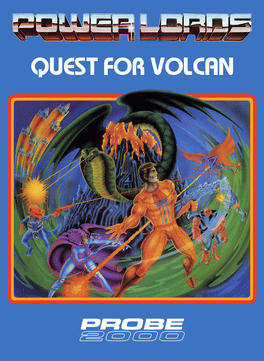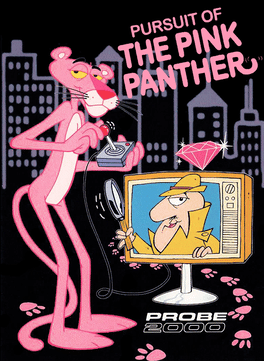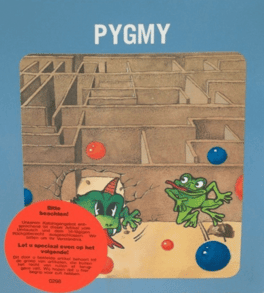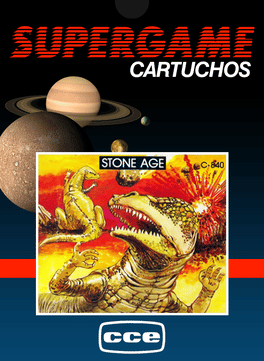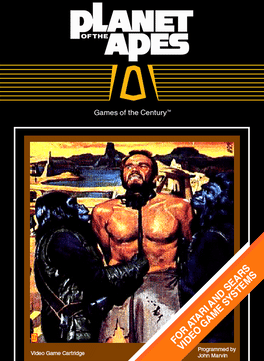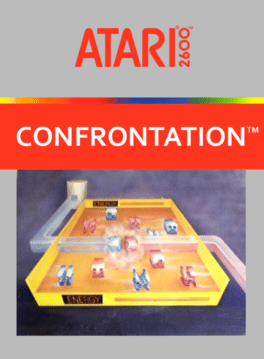Most Popular Atari2600 Games - Page 8
-
Meltdown
Meltdown is basically a game of hide and seek that place on a 4x4 grid of atoms. At the start of each round you will see a rogue quark move about the reactor agitating the atoms. Each time the quark touches one of atoms it will strip off some of the electrons and atom will shrink. Once an atom has lost all it's electrons it will become unstable, if all the atoms destabilize the reactor will blow! Why 20th Century Fox decided to cancel Meltdown is unknown, but was most likely due to the collapsing video game market. The decision to cancel the game must have been made at the last moment, as advertisements proudly boasting 'Just Released' had already been printed. Although Meltdown was displayed at the 1983 CES show, it was never seen again after the show closed. Long thought lost, Meltdown surfaced in a resale shop in 2004 where by chance it was discovered by a passing collector. -
Grover's Music Maker
Grover's Music Maker was originally called Monkey Music and featured a dancing monkey instead of Grover. Grover's Music Maker was an attempt by Atari to introduce children to the music through some well known (and some not so well known) children's tunes. Selecting one of the twenty letters (A -T), will cause Grover to start jumping around while some music is played in the background. It's unknown why the game got canned, but it may be due to Atari pulling the plug on the 2600 Children's series after its less than stellar performance. Other reasons may have been poor beta testing results or limited long term playability. -
Good Luck, Charlie Brown!
Good Luck, Charlie Brown should have been the last of the Children's Work Shop releases, but never saw the light of day. Although the game was found a long time ago, the rom had not been dumped until quite recently so the game is still a bit of a mystery. The only known version is very incomplete with little gameplay implemented, but rumors persist of a far more complete version in existence. The game only consists of one screen in which you control Charlie Brown as he flies his kite around the screen. At the bottom of the screen there's a wind gauge which shows the speed and direction of the wind. There's also a timer a the bottom of the screen which slowly counts up which may be part of the scoring system (based on total time instead of score). You goal is to fly your kite as long as possible while avoiding birds, balloons, rockets, and of course the deadly Kite Eating Tree. According to the catalog description, if Charlie Brown lost his kite he would have to earn another chance by raking leaves (what fun!). Obvi -
Frisco
Frisco is an action game, published by Homevision, which was cancelled before it was released. -
Spinning Fireball
1983
Spinning Fireball
1983
The goal of the game is to have your wizard create and shoot a fireball at the catapult that movies across the top of the screen. The controls for Spinning Fireball are bit difficult to master, which is just as well as you probably won't want to play this game very long. To create your fireball, simply push and hold the joystick forward. Once the fireball starts to spin, press the fire button to shoot it. The direction the fireball flies is based on the direction it was spinning when the button was pressed (sort of like the hammer throw in Track and Field). If you are facing right the fireball will rotate clockwise, otherwise if you left the fireball will rotate counterclockwise. If your shot actually manages to hit the catapult, then you will be taken to the second level. If your fireball hits the sides of the screen it will bounce back at you. Likewise if you shoot your fireball straight up, it will come back down. If you manage to get hit by your wayward fireball, you will lose a life. Also, the catapult at the -
Walker
1983
Walker
1983
Walker (also known as 'Clown Downtown' or 'Schussel, der Polizistenschreck') is an action game, developed by Starsoft and published by Quelle, which was released in Europe in 1983. The game is similar to another Atari 2600 game: Bobby is going home. -
Treasure Island
1983
Treasure Island
1983
Explore the Island, treasures are hidden there in unbelievable abundance. Your boat trip there is full of dangers: whales and sharks will attack you. The natives are tirelessly bombarding you. And of course rivals have also started looking for the treasures for themselves. You have an unlimited supply of bumps to use against them but only 6 lives to wager! -
Treasure Below
1983
Treasure Below
1983
There's fabulous golden treasure down there, just waiting to be taken. There's also much danger with jelly fish, octopus, sharks and other undersea creatures patrolling the deep. You've got your trusty knife and speargun for protection. Be careful, sometimes these sea monsters will surround you and you have to fight your way to the top to keep your golden treasure along with your quest. The action gets faster and faster. You test every video skill you know, plus invent a few new ones, but get that treasure you will. -
Turbo
Based on the 1981 Sega coin-op of the same name, Turbo is one of those prototypes that everyone was sure existed somewhere (it was shown at the 1983 CES once), but never seemed to show up. Thankfully all this changed when former Atari 2600 programmer Anthony Henderson happened to stumble across his long lost copy of Turbo while searching his attic. According the programmer, Coleco originally wanted the game to use paddle controllers in order to better simulate a steering wheel. However reading the input from paddle controllers takes up considerably more clock cycles than reading regular joysticks, and there was not enough time to animate the road edges. After pleading with Coleco, they were allowed switch the game from using paddles to joysticks, which freed up enough time to insert the road edge movement but the game was cancelled before it was actually implemented. Other missing features include the ambulance, water puddles, and the enemy car AI (although implemented in the current prototype, it was never tweaked -
Mazy Match
Try to reach the symbols at the top of the screen before you run out of energy by walking an invisible path on a randomly generated grid while avoiding UFO's and rocks dropped by birds. You can choose a new path at the bottom of the screen. Reaching a Minus: You loose 300 points. Return to the beginning of your chosen path to get new energy. Reaching a Plus: You gain 1000 points. Return to the beginning of your chosen path to get new energy. The flashing UFO's can be destroyed (500 points) by touching them. Reaching a Sword: You gain 500 points. The grid becomes invisible and all paths are walkable now. Return to the bottom of the screen to get new energy. The flashing UFO's can be destroyed (500 points) by touching them. When you get hit by a non-flashing UFO, you will loose 1 life. When you run out of energy, you will loose 1 life. Sometimes the paths change position and you will fall off and loose 1 life. Sometimes you can teleport from one vertical path to another. The game has a 2 player mode and 8 difficulty -
McDonald's: Golden Arches Adventure
The existing prototype uses the Tutankham game code. As such, PARKERBROS 83DAVEENGMAN can be found at the very end of the compiled code listing, along with a few of the Tutankham explorer graphics. Also, the characters 0123456789, ABCDEFTWV, and PLAY are in the code. Although McDonald's is far from finished, the game's designer Isabel Garret was able to give us the details on how the game would have been played: 'You are Ronald McDonald flying in your spaceship. Hungry aliens are descending on the Golden Arches below to eat them. You must fly down to the ground and pick up McDonald's food to bring up and feed the aliens, but certain aliens will only eat certain McDonald's fast food (shakes, fries, hamburgers) so you need to feed them the right food. If you don't feed them in time, they start to eat the Golden Arches, but not to worry, you can fly back down to the ground and pick up pieces to rebuild the Golden Arches'. -
Frogger
1983
Frogger
1983
This version of Frogger is different than the Parker Brothers cartridge-based release in 1982. The 1983 Starpath version of Frogger utilized the Starpath Supercharger expansion peripheral created by Starpath for playing cassette-based proprietary games on the Atari 2600. Although Parker Brothers owned exclusive rights to cartridges of Frogger, they did not own the magnetic media rights, opening the door for Starpath to create their own version. The game is one of a few cassette based games ever released for the Starpath Supercharger. Unlike the first two games Landrum designed for Starpath, this one does not contain a secret way to see the designer’s initials. -
Gauntlet
1983
Gauntlet
1983
This game has nothing to do with the Atari arcade game or any of the home-ported versions. You are the great explorer, Sir Robert Wittenbottom. You have discovered an ancient civilization deep within the forest of a mysterious island. Since you're a likable old fellow, they have decided to induct you into their council of warriors. But first you must prove your worthiness by running the gauntlet. You are given three glasses of water. You must run through the gauntlet to the ceremonial fires and use your water to put them out. You current glass of water will then be refilled then it is off to the next fire. Of course, it is not that easy. You must jump over rocks and logs, duck under stones, arrows and tomahawks, and avoid hitting trees or touching the sides of the gauntlet.You can ease the thirst of the old men you come across for points but it will cost you water. The game is over when you run out of your third glass of water. To jump, just press the fire button. To duck, pull back then press the fire button. -
My Golf
1990
My Golf
1990
Welcome to MY GOLF! The latest state-of-the-art golf simulation for your ATARI 2600. It's amazingly real with rivers, sand traps, ponds, trees, roughs and out of bounds. Play alone or join a friend into a relaxing game of MY GOLF. But don't be fooled, you need skill, strategy and great concentration. -
Power Lords: Quest for Volcan
'Adam, Leader of the Lords, and Shaya, Queen of Power, are extra-terrestrial warriors who battle deadly aliens on the mystical Volcan Rock. Using lasers to fight the alien space serpent, the Power Lords can gain entry into the rock and search its endless chambers for the glowing touchstone that activates powerful anti-alien weapons and devices.' Power Lords was based on the 1983 toy line of the same name. North American Phillips (NAP) must have thought that it was going to be a huge hit, because games were developed for the Atari 2600, Colecovision and Odyssey 2. Of these games only the Odyssey 2 version was released and is considered to be the rarest US released game for the system. All three versions play similarly, but the Atari 2600 and Colecovision versions have an additional stage which makes the game slightly more interesting. Like the other versions, the 2600 version of Power Lords is not all that fun to play and the overall difficulty of the game is also rather high. Had Power Lords been released, it prob -
Pursuit of the Pink Panther
Pursuit of the Pink Panther was based off the famous cartoon series and inspired by the Pink Panther movies starring Peter Sellers as inspector Clouseau. This game actually started out life as Trail of the Pink Panther by U.S. Games (based on the then current movie), but when U.S. Games went out of business they sold the rights to North American Phillips (NAP) who decided to release their own version of the game through their Probe 2000 division. It is unknown if any work was already done on the U.S. Games version or if any of those ideas were used in the Probe 2000 version of the game. Although Pursuit of the Pink Panther was heavily marketed at the June 1983 CES, it was never released, most probably because the special RAM/ROM chip that NAP used to squeeze all the graphics and gameplay elements into the game couldn't be reliably manufactured. When the first batch of chips came back defective from the manufacturer NAP decided to cancel the game rather than try and find a new source for the chips. The crumbling gam -
Pygmy
Embark on a riveting pixelated adventure with Pygmy, an Atari 2600 game that transports you to a world of tiny wonders! As a courageous pygmy explorer, navigate treacherous landscapes, battle inventive enemies, and solve mind-bending puzzles to uncover ancient secrets. With its charmingly simplistic graphics and addictive gameplay, Pygmy invites you to rediscover the joy of classic gaming. So grab your joystick and prepare for a pint-sized journey like no other! -
Stone Age
1983
Stone Age
1983
The player controls a caveman whose mission over a 75 second time clock is to kill dinosaurs by throwing rocks and gaining game points. If the player misses the target the rock turns to dust. Stone Age was released in Brazil by CCE. A planned North America version by TechnoVision was never released. -
Planet of the Apes
You play the role Col. George Taylor (who looks a bit like Pitfall Harry's long lost brother). Your mission is to guide Col. Taylor through a series of screens as he avoids an army of apes and makes his way towards the Forbidden Zone. There are three different kinds of apes in this game, and they all move in a straight line across the screen from right to left. For years Planet of the Apes had been misidentified as another 20th Century Fox prototype called Alligator People. This was because the first Planet of the Apes prototype was found in case labeled Alligator People and since no screenshots of either game existed, there was no reason to doubt the name on the label. However, after much research it was discovered that this game was in fact really John Marvin's lost Planet of the Apes game. It's obvious that Planet of the Apes still had some work to be done, but was finished enough to go through initial play testing. However, before programmer John Marvin could finish it, he left 20th Century Fox to go work for E -
Confrontation
1983
Confrontation
1983
Confrontation is a strange strategy game which was never commercially released, but was available directly from Answer for a short time. Only people who saw it on display at the 1983 CES show would have know about it and ordered it so while it's not technically a prototype, it's close enough. I've racked my brain on how to best describe the gameplay of this game, and after much searching I've determined the best description is in Leonard Herman's "ABC's to the VCS" (pick up a copy today!). Since Confrontation uses a programming trick to display so many objects on the screen at once, screenshots will only show one players pieces at a time. Take my word for it, they're really all there.
